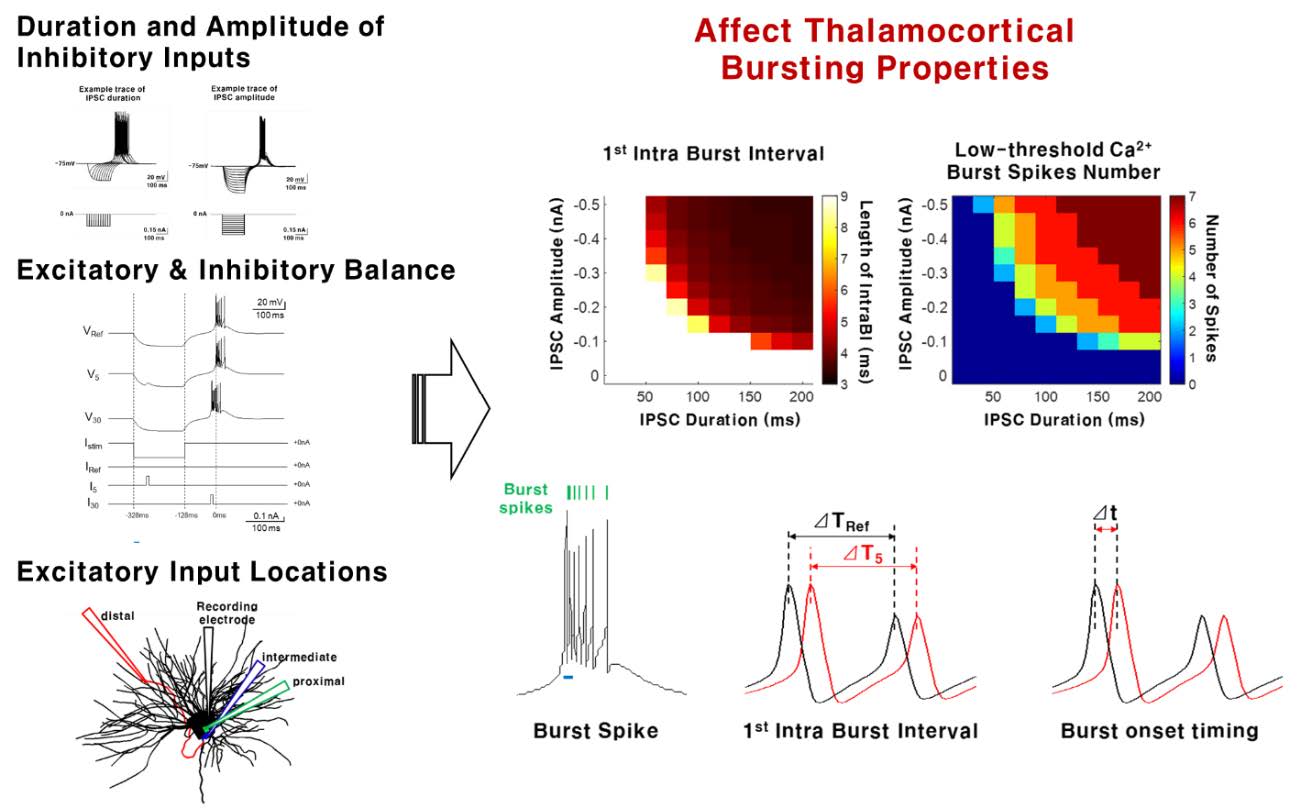Articles
Article Tools
Stats or Metrics
Article
Original Article
Exp Neurobiol 2019; 28(5): 568-577
Published online October 31, 2019
https://doi.org/10.5607/en.2019.28.5.568
© The Korean Society for Brain and Neural Sciences
A Computational Modeling Reveals That Strength of Inhibitory Input, E/I Balance, and Distance of Excitatory Input Modulate Thalamocortical Bursting Properties
Sanggeon Park1,2,3,4, Jeong-Woo Sohn1,2, Jeiwon Cho1,2* and Yeowool Huh1,2*
1Department of Medical Science, College of Medicine, Catholic Kwandong University, Gangneung 25601, 2Translational Brain Research Center, Catholic Kwandong University International St. Mary’s Hospital, Incheon 22711, 3Department of Neuroscience, University of Science ' Technology, Daejeon 34113, 4Center for Neuroscience, Korea Institute of Science and Technology, Seoul 02792, Korea
Correspondence to: *To whom correspondence should be addressed.
Jeiwon Cho, TEL: 82-32-280-6515, FAX: 82-32-280-6510
e-mail: jelectro21@gmail.com
Yeowool Huh, TEL: 82-32-280-6526, FAX: 82-32-280-6510
e-mail: huh06@cku.ac.kr
This is an Open Access article distributed under the terms of the Creative Commons Attribution Non-Commercial License(http://creativecommons.org/licenses/by-nc/4.0) which permits unrestricted non-commercial use, distribution, andreproduction in any medium, provided the original work is properly cited.
Abstract
The thalamus is a brain structure known to modulate sensory information before relaying to the cortex. The unique ability of a thalamocortical (TC) neuron to switch between the high frequency burst firing and single spike tonic firing has been implicated to have a key role in sensory modulation including pain. Of the two firing modes, burst firing, especially maintaining certain burst firing properties, was suggested to be critical in controlling nociceptive behaviors. Therefore, understanding the factors that influence burst firing properties would offer important insight into understanding sensory modulation. Using computational modeling, we investigated how the balance of excitatory and inhibitory inputs into a TC neuron influence TC bursting properties. We found that intensity of inhibitory inputs and the timing of excitatory input delivery control the dynamics of bursting properties. Then, to reflect a more realistic model, excitatory inputs delivered at different dendritic locations—proximal, intermediate, or distal—of a TC neuron were also investigated. Interestingly, excitatory input delivered into a distal dendrite, despite the furthest distance, had the strongest influence in shaping burst firing properties, suggesting that not all inputs equally contribute to modulating TC bursting properties. Overall, the results provide computational insights in understanding the detailed mechanism of the factors influencing temporal pattern of thalamic bursts.
Graphical Abstract

Keywords: Computational biology, Thalamus, Sensory gating, T-Type Calcium Channels


